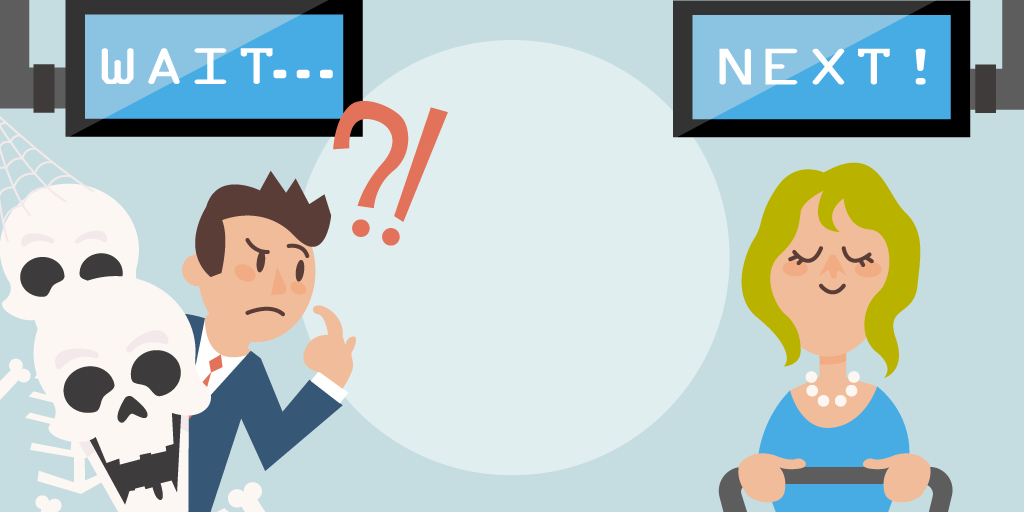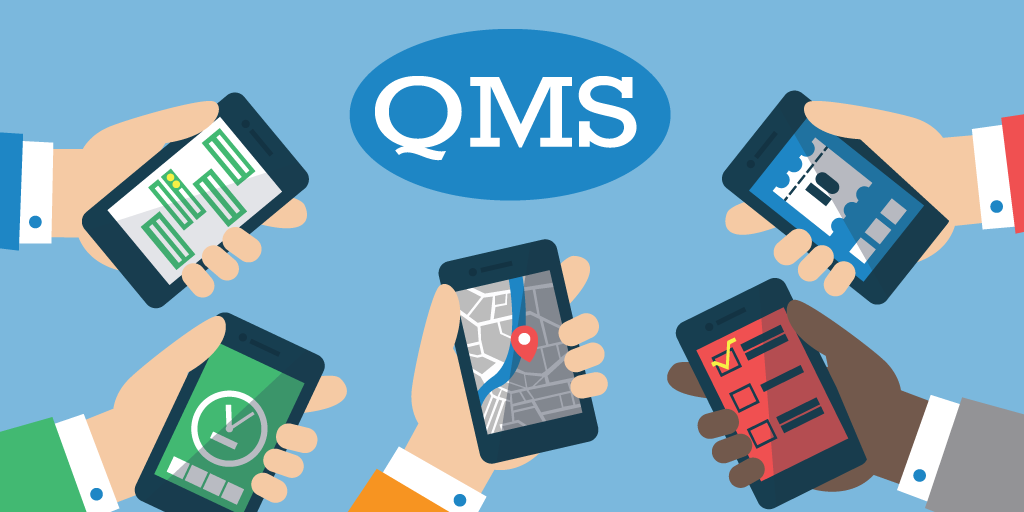When times are changing, some industries tend to fall behind. They can’t keep pace. Or, they like to stay with tradition, but they do so at their own risk.
Banks need to get up to speed when it comes to revolutionizing their queues.
At least one study has found that the average bank queue is more than 20 minutes. Sometimes, it even lagged as long as 40 minutes.
Nobody wants to wait that long. In fact, it’s reported that people will hire others to wait in line for them at banks — at least it's like that in India.
But banks don’t have to make their customers wait. Any bank that adopts the latest principles from queue strategies can learn how to step ahead and show their patrons they care about customer experience.
Banking of the Future With QMS

Long queues plague every industry, banks included. They can inspire customer’s irritation — even disgust. But anyone can learn how to reduce queues in banks by adopting a nifty technology called a queue management system (QMS).
To put it generally, queue management software — like Qminder — overhauls queuing by putting customers first. That means introducing systems like:
A digital kiosk where customers sign-in (instead of waiting in line).
SMS alerts to let customers know when it’s their turn.
Analytics data to inform businesses about daily operations.
These aspects of QMS provide huge benefits to any business, because they prioritize customer experience, especially when it comes to learning how to reduce queues in banks.
And customers spend up to 9% more with companies that go out of their way to provide a great service.
Removing the Line Altogether

The biggest issue facing queues in banks today is that they rely on an analog system: physical lines. Queue management in banks today have customers standing between two faux velvet ropes, tapping their feet, while they wait to be served.
Remember, customers who visit a bank are on a mission. They’re not window shopping. They want to get in and out as fast as possible so they can get on with their day.
Respect the customer’s time, and they’ll be happy to shop with you.
If queues in banks today are the problem, why not remove them?
The Digital Kiosk
Let’s imagine the bank of the future. You walk in the door. But there’s no line! Instead, there’s a digital kiosk terminal located near the entrance. You walk up to it and tap in your name, and perhaps your purpose for visiting that day.
Except that future can exist right now — if banks implement a queue management system.
Patrons are placed in a digital queue. When it’s their turn, a teller calls them to the counter to be served. They can see where they are in line by observing HDTVs hung on the walls of the bank; Becky can see she’s before Harold and just after Samantha.
Customers are free to sit or wander — maybe grab a coffee across the street — as they wait. They’re not corralled into the line like sheep.
By giving customers back their time (their autonomy) banks enable customers to wait in leisure. Now that’s effective queue management in banks.
Fairness of Bank Queues
QMS not only eliminates traditional lines, it promotes fairness. The virtual queue is orderly in that it exemplifies first come, first serve.
When customers are frustrated (which can be amplified by the frustration of other customers), it tends to shape their overall assessment of the experience. Even if the service itself is exceptional, that disdain will compel the customer to walk away with a negative feeling.
But not with QMS. Fundamental to the principles and working of queue management is that every customers deserve the best service possible, and they get it.
Bringing Employee Satisfaction to a New Level

The best part about QMS? It empowers not just customers but employees.
When configured, QMS enables customers to tell banks why they’ve arrived that day. Maybe it’s to deposit a check, open a savings account, or cash in some loose change.
Once customers have finished entering their information at the kiosk, employees are notified and can match customers with the help they need — the employee that can best help the customer accomplish their goals for visiting the bank that day.
Doing so is one way to maximize a strategy that knows how to reduce queues in banks. Rather than the way queues in banks today operate, in which customers sometimes have to sift through a bureaucracy before finding the help they need.
At the same time, managers can schedule accordingly to meet customer demand.
Banks don’t need to feel overwhelmed, when they have data that tells them how best to meet customer satisfaction.
Data That Counts
Arguably the most powerful resource QMS provides is data. Data drives the world. We do live in an information economy.
What kind of data can QMS provide?
For starters, QMS informs managers as to when the busiest hours occur. Whether that be at 3pm on a Tuesday, or maybe every second Friday of the month (payday).
Now you may think, “Why do I need QMS. I can just look around and see when the bank is busiest.” The problem with this reasoning is that our intuitions often lead us astray.
The manager of the Kamppi Shopping Centre in Helsinki, Finland learned how wrong his intuitions were. While he believed people would mainly shop in the evenings, when they're out of work or school, the data showed that most people actually roamed the mall on their lunch breaks.
Data clears away prejudice and provides the insights banks need to improve their service.
Clearing the Air: How to Interpret Data

It’s important to recognize that QMS data is not just a matter of recognizing the busiest days of the week. The implications data provides related to queue management in banks for informing strategy is nearly endless.
Gain valuable insights into the type of service your customers expect.
Track employee performance.
Compare and contrast multiple retail locations.
Data makes hidden connections clear.
It can tell you how long the average customer waits to be served. Then you can compare that statistic to the past and see if it’s radically different, then ask the question “What’s changed”, or “What have we done differently”.
The point is that queue management systems provide information that in turn prompt their own questions, that give guidance into where banks should be looking to create the best possible experience for their customers.
Entertain Your Customers
We’ve talked a lot about how QMS reduces waiting time for bank queues. But now we need to take a slight detour, to something that’s tangentially related.
If queues are frustrating and boring, what else can banks do to alleviate that tedium? Well, entertain their customers!
Queuing experiences can be pleasant when our minds aren’t focused on the queue. After all, customers tend to overestimate how long they’ve waited by an average of 36%](https://www.nytimes.com/2012/08/19/opinion/sunday/why-waiting-in-line-is-torture.html). And that happens because customers have nothing else to think about but the line.
Banks can overhaul their queues simply by entertaining their customers:
Display entertaining programming on HDTVs.
Prompt customers to answer surveys to report on their experience.
Engaging customers is the best way to reduce the tension inherent in queueing. Because it’s typically the psychology behind queueing rather than the queues themselves, that makes queues feel unbearable.
Banks that overhaul their queue strategy effectively reduce customer complaints because they provide an exceptional service. That means customers want to use that bank’s service.
They keep coming back, and they become representatives of the branch when they relate their positive experiences to friends and family.
Queue management systems are an intricate part of strategies for queues in banks today, offering unmatched tools to improve queues in banks.
You can discover for yourself how QMS can impact your business by trying Qminder for free for 14 days. No need to enter a credit card when signing up. Qminder provides the resources any business can utilize to step into the future.






